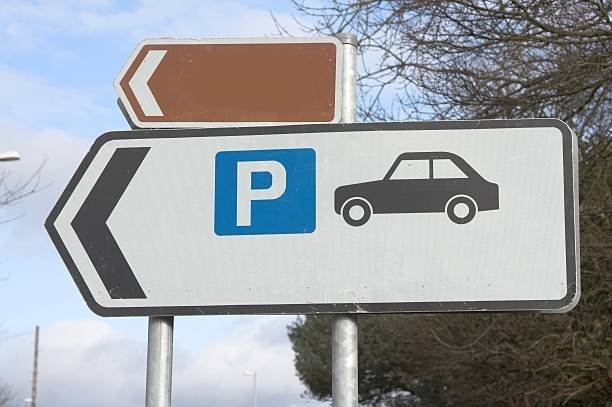Top 10 Tips for Passing Your UK Theory Driving Test
The theory test found a useful step for UK people in getting a driving license. It is a measure of your comprehension of road signs, traffic rules, and friendly ways of driving. Achieving passing grades on the test is the first step towards preparing for the practical driving test. With the right amount of training and strategies, you can avoid the frustration of another attempt, and you have more chances of conquering the exam on the first try. We’ll unveil the top 10 tips for passing your UK theory driving test.
Understand the Test Format:
The UK theory test consists of two parts: the aforementioned aspects of the test, which are the multiple-choice question (MCQ) section, and the hazard perception test. Know the structure and duration of every single section, as well as the stretch given to each, to be able to control the time during the test.
The question-and-answer section consists of 50 questions, most of which are on the signs, the traffic regulations, and the vehicle maintenance. This test will allow you 57 minutes to finish this section.
It is the hazard awareness test, which consists of 14 video clips and recognizes greatly growing hazards immediately. Therefore, you must respond appropriately, at least with a score of 44 out of 75.
Study the Official Learning Materials:
The DVSA offers a variety of official educational sources that include such fun and easy-to-use tools as the Highway Code, study guides, and practice tests. This might be a true treasure for those who would like to gain deep knowledge about the materials instead of just memorizing some points.
The White Book of Rules and Regulations for UK Road Users: The Highway Code would be a good book to read as it contains everything from the rules to the regulations concerning this subject. You must take time to go through the contents of the agreement and ensure you understand it.
Use online practice tests:
Virtual practice tests are what you should use to refresh your memory, recreate the conditions of the real theory exam, and check your progress and skills. Apart from the fact that many websites nowadays provide you access to them for free or if you pay, you can enhance your exam preparedness in terms of pattern analysis of the kinds of questions as well as time management techniques.
Frequently draw on these tools, for they are valuable in the sense that they can help you become aware of your strengths and weaknesses. **Instructions: ** Transform the given sentence into an active voice construction while maintaining its original meaning. Original: By establishing regulations on greenhouse gas emissions, energy efficiency standards, and renewable energy targets, this approach incentivizes responsible business practices while promoting environmental sustainability.

Incorporate visual learning:
Road signs, signals, and markings will be given in a theory test but also practical. Use visual cues such as images, tables, and graphs to stimulate your memory of the topics. Instead of study sheets, put images of road signs that the students should remember on flash cards. Also, look up online quizzes that use these images with the meanings of the road signs.
As well, you should spend some time watching educational videos or visiting the Official DVSA Revision Question Bank site, which is sufficient to learn more from diagrams and illustrations along with some questions posed.
Develop a study plan:
A prudent study schedule is, however, the way to go, as this ensures efficiency in preparation. Take some recognizable time each day or each week for studying and practicing. Break down the study materials into bite-size chunks and establish attainable goals.
The most important factor is consistency because constant testing will help you make the knowledge you have gained stick. Consequently, you will feel a lot more confident on your test day.
Prioritize challenging areas:
Try to learn from your errors by determining the regions you are struggling with most as you complete practice tests and study materials. They could include several questions, multiple-choice questions, or a section of the test.
Make up for your academic weaknesses by focusing more on the areas you find more difficult so that they do not affect your overall grade this much.
Learn from Your Mistakes:
When answering questions at practice, make a note of the questions you answer incorrectly, and reading the explanations, will help to increase your understanding of the concept. Learning to perceive why an answer is correct or wrong is the key to gaining more knowledge, and you will have a lesser chance of correcting a mistake.
Do not allow errors to scare you, but blunder as building stones in the path of knowledge.
Practice Hazard Perception Tests:
The hazard warning test requires fast responses and swift identification of looming hazards. To be at the top of this part, join real hazard perception trials or reliable online sites.
Engage with the scoring system and know the format of the test before starting it because it helps in knowing the types of hazards you may come across during the exam.
Manage Your Test Day Anxiety:
It is a matter of fact that your body will go through some anxiety as you take a theory driving test. But by doing more harm than good, a lot of anxiety can befall you. Apply stress management tools like deep breathing exercises and positive self-talk, which will help to change negative self-talk and visualization.
Always relax and sleep well the night before taking the exam, as this will prepare you mentally for the test. However, also ensure that you are well hydrated when you find yourself in that room. If you put in the work, attend the classes, and understand them, you should be okay. Also, then you can channel your nerves into something good, so being nervous before a test should be a positive sign that you know what’s going on.

Stay focused and confident:
Remember to pay attention, and you need to be confident in what you have in mind. Work your way through each option and dismiss the obvious ones that are false before finally deliberating on keeping the essentials and selecting your answer.
Adequate approaches to solving the problem: when you come across a question that you find too puzzling, don’t let yourself keep dwelling on it for too long. Construct a note for yourself to revisit later. Shift your attention to the next question to keep the clock ticking.
Please note that the test will not test your knowledge of road safety and driving principles to trip you up; it will just test your understanding. Have faith in yourself that the preparation you have made will stand for it.
Conclusions about Top 10 Tips for Passing Your UK Theory Driving Test:
Taking the UK theory driving test is a time-consuming and challenging course that requires not only a lot of work but also some helpful study techniques and continuous practical exercises. Implementing these top 10 strategies will go a long way toward strengthening your skills so that you can face the challenges on the road with confidence.
As the first stage, the theory test is just a gateway to learning how to drive securely and responsibly. Adopt the learning mode; don’t give up studying; and celebrate your achievement after you achieve your goal. Armed with the right attitude and preparations, you will be one step more advanced in getting your driving skills approved and being among the most confident drivers in the UK. That was all about the Top 10 Tips for Passing Your UK Theory Driving Test.

FAQs
Is the second paper in the UK theory test along with the MCQ section?
A multiple-choice section gives the pupil 50 questions to answer.
Is the hazard perception test comprised of only multiple-choice questions?
To pass the hazard perception test and thus get the full driving license, you will have to score at least 44 points out of 75 available marks.
